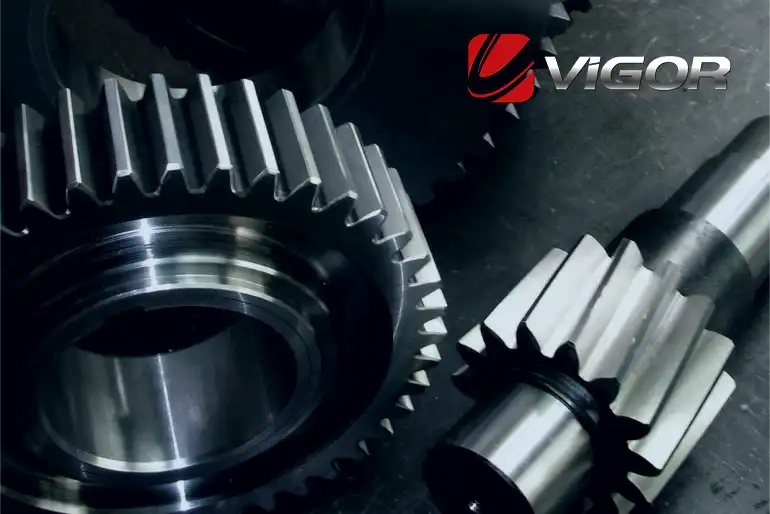
Knowledge
The Differences and Application Environments of Spur Gears and Helical Gears
The differences and application environments between spur gears and helical gears are as follows:
Differences
- Nature differences: Helical gear transmission is a commonly used form of mechanical transmission parts. Its gears are made of high-quality high-strength alloy steel, which not only has high durability and transmission efficiency but also requires consideration of the helix angle and helical direction during design and manufacturing to ensure smooth and reliable transmission. Spur gear transmission is a basic form in gear classification. Its tooth surface is parallel to the axis, with a relatively simple structure, lower manufacturing and maintenance costs, and is suitable for applications with lower requirements for transmission accuracy.
- Meshing performance: During the meshing process of helical gears, the contact line of the tooth surface changes from short to long and then from long to short. This gradual contact method makes the meshing process more stable, significantly reducing shock and noise. It is particularly suitable for high-speed and heavy-load transmission applications, such as high-speed machine tools and automotive gearboxes. In contrast, the meshing process of spur gears is relatively direct, with the contact line length remaining constant, which can easily generate significant noise and vibration. It is suitable for low-speed and light-load transmission systems.
- Overlap: The tooth surface of helical gears is inclined, which results in a larger overlap than spur gears. This means that at any given moment, multiple tooth surfaces are simultaneously engaged, significantly enhancing the gear's load-carrying capacity, extending its service life, and reducing the risk of wear and breakage due to excessive force on a single tooth. Spur gears have a smaller overlap and a relatively lower load-carrying capacity, making them suitable for transmission systems with smaller loads.
- Structural compactness: The minimum number of teeth for helical gears can be smaller than that of spur gears. Therefore, in the case of the same transmission ratio, helical gear transmission mechanisms can be designed more compactly, saving space. This is particularly suitable for applications with strict requirements on equipment volume, such as aerospace and precision instruments. Spur gears, due to their simple structure, are suitable for transmission systems with less stringent space requirements.
Different Applications
- Spur gears: Mainly used to reduce speed and increase torque, they are commonly found in various mechanical equipment, such as mixers, washing machines, automobiles, bicycles, mechanical clocks, etc. Spur gears are simple in design, easy to manufacture, low in cost, and high in efficiency. They can achieve various transmission ratios and are particularly suitable for low-speed and light-load applications with lower requirements for transmission accuracy. In household appliances and simple machinery, spur gears are widely used due to their economy and reliability.
- Helical gears: Widely used in applications where heavy loads are transmitted between parallel shafts at very high speeds, such as automotive gearboxes, printing machinery, conveyors, elevators, factory automation equipment, etc. Helical gears have higher load-carrying capacity and contact ratio, are more stable and quiet than spur gears, and have good precision grades. They are suitable for applications with high requirements for transmission smoothness and noise. In addition, helical gears are widely used in automotive industry differential gears, which can effectively distribute the rotational speed of the left and right wheels, improving driving stability; in industrial machinery such as machine tools, helical gear transmission systems can improve processing accuracy and efficiency; in aircraft engines in the aerospace field, helical gear transmission systems can ensure stable operation at high speeds; in the marine industry's propulsion systems and auxiliary systems, helical gear transmission systems can withstand large torques and high loads, ensuring the reliable operation of ships.
In summary, spur gears and helical gears have significant differences in nature, meshing performance, overlap, structural compactness, and application. The choice of gear type depends on specific transmission requirements and working environments. Spur gears, with their simplicity and economy, are suitable for low-speed and light-load applications, while helical gears, with their high efficiency and stability, play an irreplaceable role in high-speed and heavy-load fields.
If you have any questions, demand,or new parts that need to be developed or improve your supply chain, please feel free to contact us atinfo@castings-forging.com




